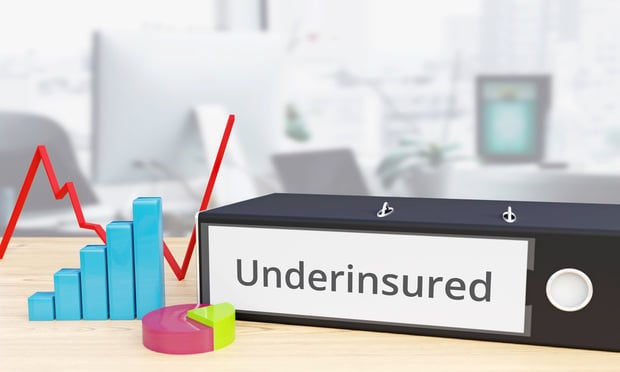 Three out of five homes in the U.S. are underinsured by an average of 20% below full value, according to a citation from the property data aggregator CoreLogic in a 2019 report published by Rutgers Center for Risk and Responsibility. And risk assessment firm AIR Worldwide reports that 34.6% of insurable North American average annual loss (AAL) is uninsured, resulting in an estimated $32.7 billion in unreimbursed cost to policyholders. (Photo: MQ-Illustrations via Adobe Stock)
Three out of five homes in the U.S. are underinsured by an average of 20% below full value, according to a citation from the property data aggregator CoreLogic in a 2019 report published by Rutgers Center for Risk and Responsibility. And risk assessment firm AIR Worldwide reports that 34.6% of insurable North American average annual loss (AAL) is uninsured, resulting in an estimated $32.7 billion in unreimbursed cost to policyholders. (Photo: MQ-Illustrations via Adobe Stock)
The insurance industry sells peace of mind. But for many business owners, the events of the past few years have left them feeling anything but tranquil. The COVID-19 crisis and its ongoing fallout have exposed and exacerbated several weaknesses in their insurance coverage. Whether it's issues with business interruption, the global supply chain, the scourge of ransomware and cybersecurity attacks, wildfires or increasingly severe weather, it's clear insureds are facing threats from many directions.
Recommended For You
Want to continue reading?
Become a Free PropertyCasualty360 Digital Reader
Your access to unlimited PropertyCasualty360 content isn’t changing.
Once you are an ALM digital member, you’ll receive:
- Breaking insurance news and analysis, on-site and via our newsletters and custom alerts
- Weekly Insurance Speak podcast featuring exclusive interviews with industry leaders
- Educational webcasts, white papers, and ebooks from industry thought leaders
- Critical converage of the employee benefits and financial advisory markets on our other ALM sites, BenefitsPRO and ThinkAdvisor
Already have an account? Sign In Now
© Touchpoint Markets, All Rights Reserved. Request academic re-use from www.copyright.com. All other uses, submit a request to [email protected]. For more inforrmation visit Asset & Logo Licensing.







